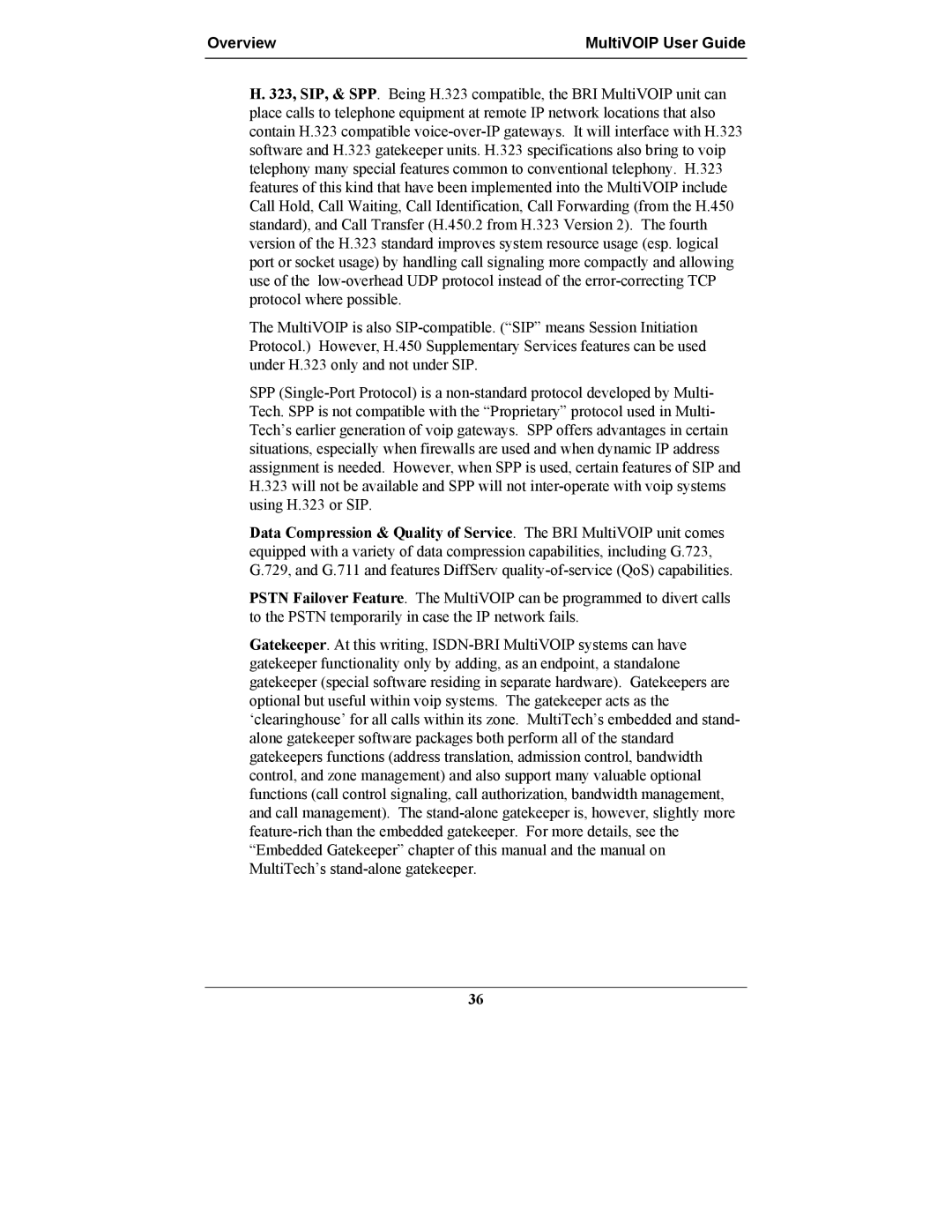Overview | MultiVOIP User Guide |
| |
H. 323, SIP, & SPP. Being H.323 compatible, the BRI MultiVOIP unit can place calls to telephone equipment at remote IP network locations that also contain H.323 compatible voice-over-IP gateways. It will interface with H.323 software and H.323 gatekeeper units. H.323 specifications also bring to voip telephony many special features common to conventional telephony. H.323 features of this kind that have been implemented into the MultiVOIP include Call Hold, Call Waiting, Call Identification, Call Forwarding (from the H.450 standard), and Call Transfer (H.450.2 from H.323 Version 2). The fourth version of the H.323 standard improves system resource usage (esp. logical port or socket usage) by handling call signaling more compactly and allowing use of the low-overhead UDP protocol instead of the error-correcting TCP protocol where possible.
The MultiVOIP is also SIP-compatible. (“SIP” means Session Initiation Protocol.) However, H.450 Supplementary Services features can be used under H.323 only and not under SIP.
SPP (Single-Port Protocol) is a non-standard protocol developed by Multi- Tech. SPP is not compatible with the “Proprietary” protocol used in Multi- Tech’s earlier generation of voip gateways. SPP offers advantages in certain situations, especially when firewalls are used and when dynamic IP address assignment is needed. However, when SPP is used, certain features of SIP and H.323 will not be available and SPP will not inter-operate with voip systems using H.323 or SIP.
Data Compression & Quality of Service. The BRI MultiVOIP unit comes equipped with a variety of data compression capabilities, including G.723, G.729, and G.711 and features DiffServ quality-of-service (QoS) capabilities.
PSTN Failover Feature. The MultiVOIP can be programmed to divert calls to the PSTN temporarily in case the IP network fails.
Gatekeeper. At this writing, ISDN-BRI MultiVOIP systems can have gatekeeper functionality only by adding, as an endpoint, a standalone gatekeeper (special software residing in separate hardware). Gatekeepers are optional but useful within voip systems. The gatekeeper acts as the ‘clearinghouse’ for all calls within its zone. MultiTech’s embedded and stand- alone gatekeeper software packages both perform all of the standard gatekeepers functions (address translation, admission control, bandwidth control, and zone management) and also support many valuable optional functions (call control signaling, call authorization, bandwidth management, and call management). The stand-alone gatekeeper is, however, slightly more feature-rich than the embedded gatekeeper. For more details, see the “Embedded Gatekeeper” chapter of this manual and the manual on MultiTech’s stand-alone gatekeeper.
